Kathleen Herbert |
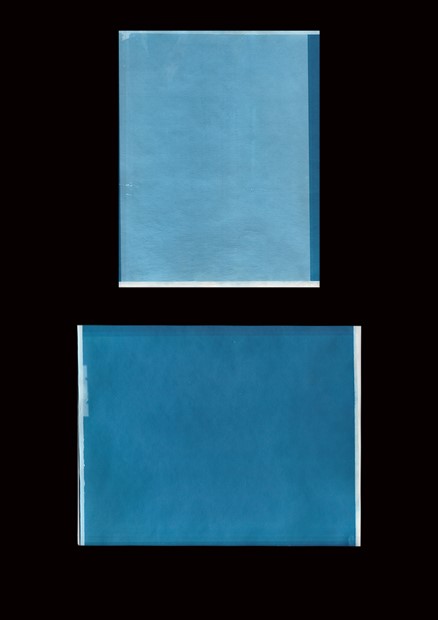 |
| Everything is Fleeing to its Presence 2019 video and binaural sound installation |
| Kathleen Herbert uses the medium of performance and documentary to question and engage with the historical and contemporary functions of space. Often she finds an obscure historical footnote that she then explores to unlock a space’s unique atmosphere and identity. Her work draws on the conventions of documentary and film to build a series of narratives, often by redefining location and scale or through a layering of details. She creates a sense of intrigue, never quite exposing the full extent of the situation or story that she is telling. Through use of the uncanny, her work blurs boundaries between fact and fiction, myth and reality, investigating ideas around superstition, rituals and histories. Herbert draws out the apparent uninteresting or unspoken, redefining social, political, historic spatial narratives. |
|
Kathleen Herbert lives and works in London. She has received several
major awards from the Arts Council England South West, and British
Council. In 2005 she was nominated for the Becks Futures Award.
Recently Kathleen’s proposals 'A History of The Receding Horizon'
and ‘Their Land Is Our Country’ were selected for the ArtAngel Open
Longlist and ArtAngel Open 100. Kathleen has completed several major commissions from the Southbank Centre, London, Royal Opera House, Covent Garden and Firstsite Gallery Colchester. She has exhibited both nationally and internationally, including: A Light Shines in the Darkness, Film and Video Umbrella Tour, UK (2014-2015); Stable, MOBIA Museum of Biblical Art, New York (2014); Force of Nature: Picturing Ruskin’s Landscape, Millennium Museum, Sheffield, (2013); Triumph of the Will, Camberwell Space, Camberwell College of Arts, London (2013); Garden of Reason, National Trust, Ham House, London (2013); Restless Times, Norwich Castle Museum and Art Gallery, Norwich (2012); Firstsite, Colchester (2012); VOLTA NY, New York, (2010); Vita, Kuben, Umea, Sweden (2009); Hå gamle prestegard, Norway (2009); Sint Lukas Gallery, Brussels (2008); Stable, Danielle Arnaud London (2008), Auckland Triennial, Auckland (2004); Out of Site, Arnolfini, Bristol (2004), Time & Again, Crawford Gallery, Cork (2003); The Heimlich/Unheimlich, RMIT Gallery, Melbourne (2002); SCAPE, Art & Industry Bienniale, Christchurch (2002); BOP, Gallery Caldeira 213, Porto (2001); The Silk Purse Procedure, Arnolfini & Spike Island, Bristol (2001). Kathleen’s practice has also been featured in various publications including Time Out, The Sunday Times Culture Magazine, Artist Newletter, Art Monthly, The Guardian Guide and recently ‘Installation as Encounter’: Ernesto Neto, Do Ho Suh and Kathleen Herbert Considered’, in Rina Arya (ed), ‘Contemplations of the Spiritual in Contemporary Art’. |
| > Curriculum vitae |
| > Press |
| > Artist website |
| > Exhibitions at the gallery: A Study of Shadows 2020, Past time is finite, future time is infinite 2016, VOLTA NY 2010, Stable 2008, |
| SELECTED WORKS |
| Blueprints for a Caesium 137 Landscape II |
| 2019 Giclée prints on Bamboo Hahnemuhle paper, pins and undeveloped cyanotype on watercolour paper 52 x 100cm Installation view by Oskar Proctor |
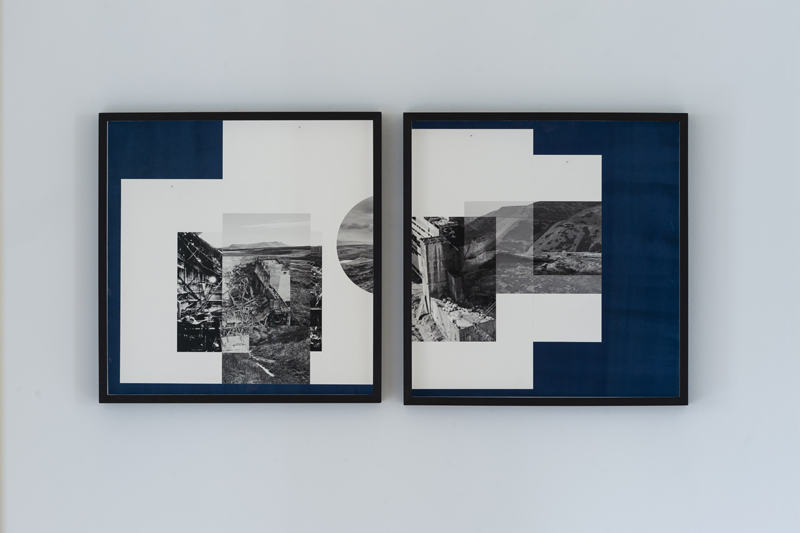 |
| Blueprints for a Caesium 137 Landscape I |
| 2019 Giclée print on Bamboo Hahnemuhle paper, pins and undeveloped cyanotype on watercolour paper 52 x 50cm Installation view by Oskar Proctor |
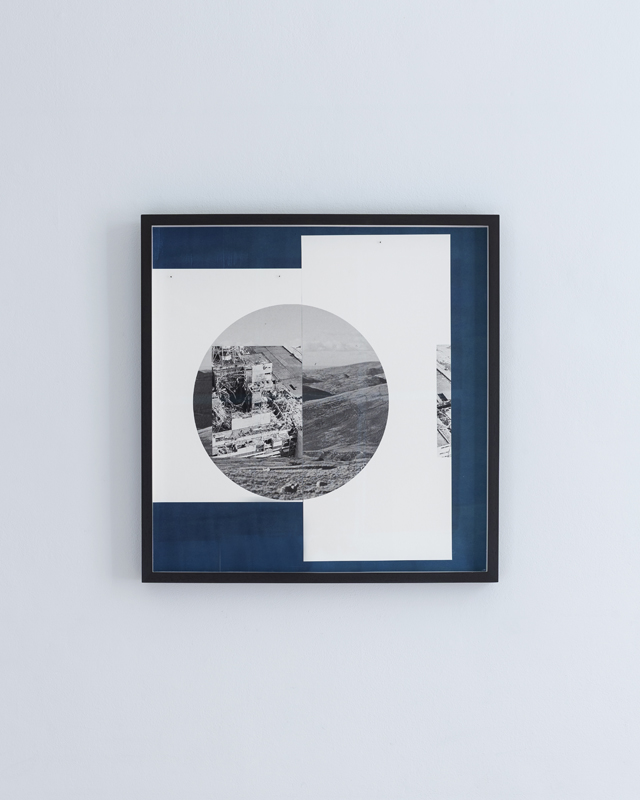 |
| A Study of Shadows II |
| 2019 21 cyanotype photograms of prisms on watercolour paper 130 x 218cm Installation view by Oskar Proctor |
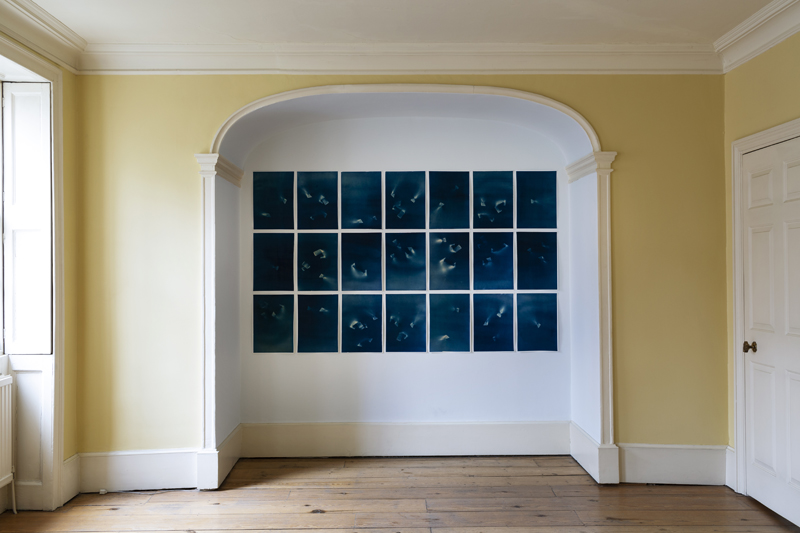 |
| A Study of Shadows III |
| 2019 6 cyanotype photograms of prisms on watercolour paper 87 x 92cm Installation view by Oskar Proctor |
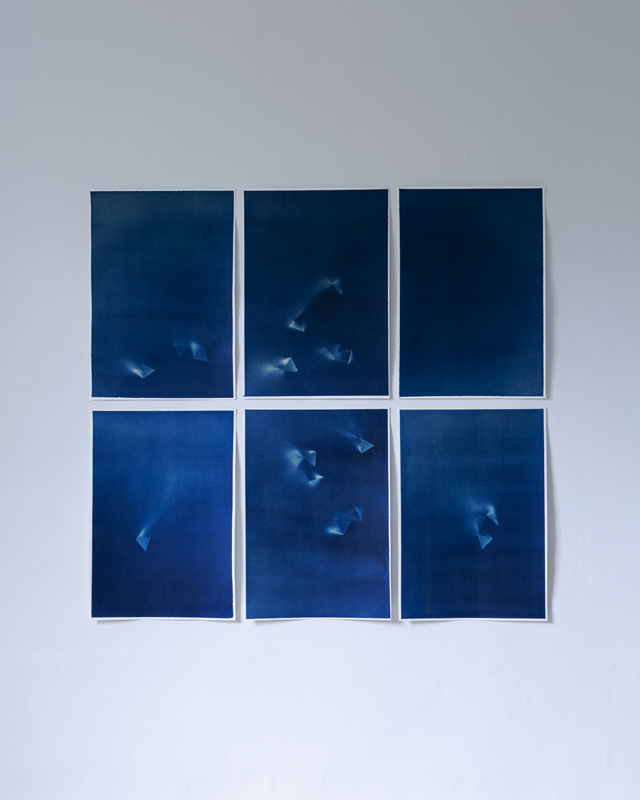 |
| Untitled |
| 2015, giclee print on Hahnemuhle German Etch paper (detail) |
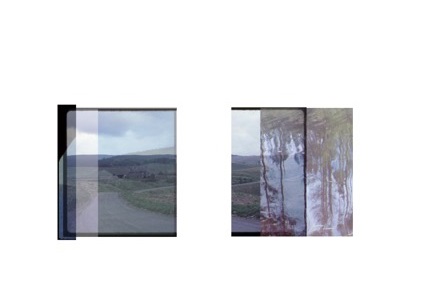 |
| Untitled |
| 2015, giclee print on Hahnemuhle German Etch paper (detail) |
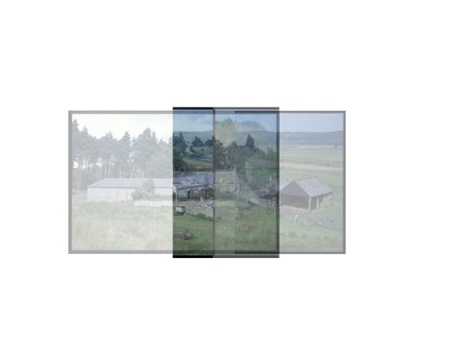 |
| A History of The Receding Horizon |
| 2015, video stills |
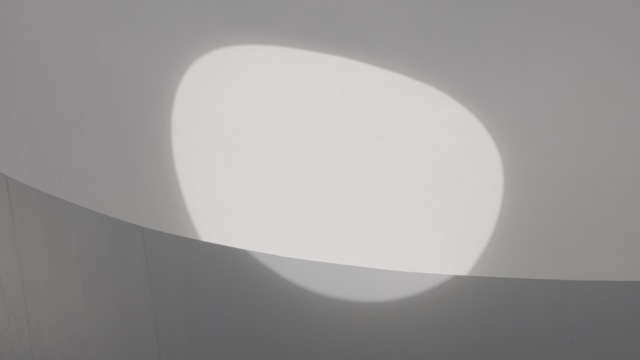 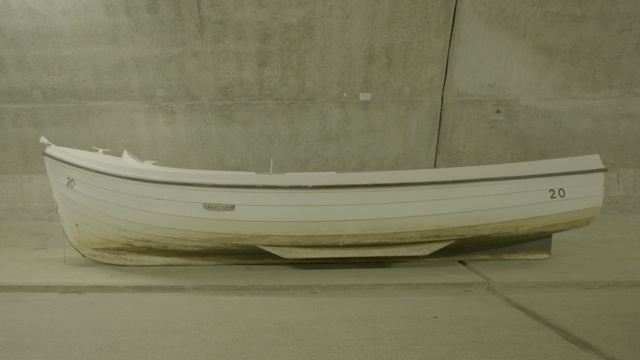 |
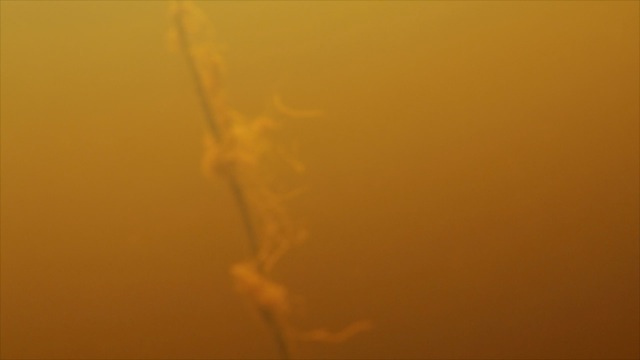 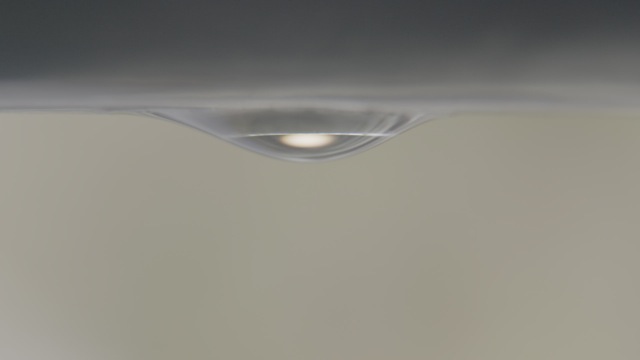 |
| They take us away to the thin air of the future or the underworld of the past I |
| 2013, photograph and laser cut constellation |
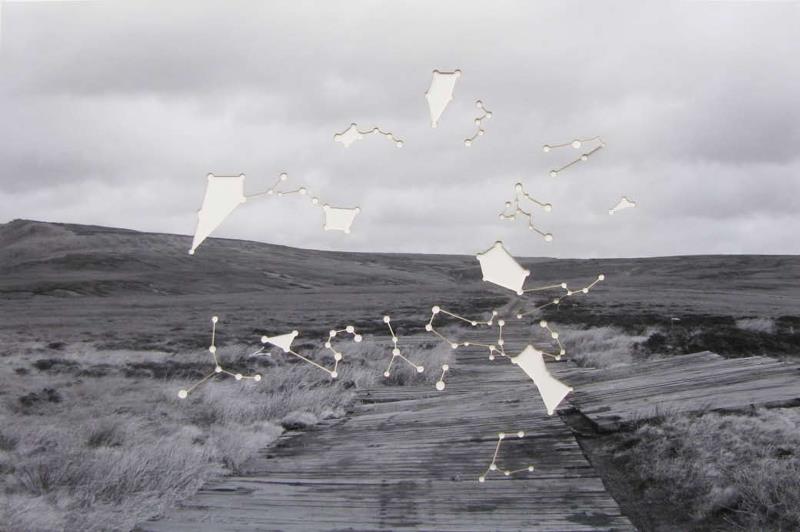 |
|
Paths are ways trodden; routes formed by the
weight of bodies imprinting upon the earth repeatedly. In this series,
the title of which is a quote by poet Edward Thomas, Herbert has
photographed the landscape of the Peak District, where in 1932 approximately
500 walkers walked from Hayfield to Kinder Scout to challenge the
right of landed gentry to enclose the countryside and to secure
access rights to open country. These paths represent a shared history;
a marking of humanity’s living amongst each other across generations
and even lifetimes. Traces of our ancestors exist in our landscapes
and we map traces anew. The idea of the future as a ‘thin world’
seems particularly relevant now, in the destructiveness of the ecological
impact we have pressed upon the earth. Herbert captures the landscape here in its fleeting state of fluctuation. As with all photography, we see a truth for the instant of the image’s exposure; its aura impossible to replicate. Herbert allows the viewer to project themselves onto the image, not only with their viewpoints, typically at eye-level looking out onto the landscape, but also with the way in which she has worked into the photographs after their printing. Each photograph of the series of twelve, for every month of the year, has been lasercut with one of the twelve astrological constellations. Without knowledge of the constellation patterns, this could at first appear to be a join-the-dots game or coordinates on a map, rather than coordinates on the celestial sphere. The fact that these constellations are cut out of the image, rather than overlaid, allows the viewer to project herself upon the image, choosing what can be seen between the stars. Constellations are mappings, points of orientation, but they are also invitations for imagination; sketches of lost pasts or imagined futures to be coloured in our continual quest to understand, to relate our position within the world. Herbert’s work here is a reflection of our desire to simultaneously evade and embrace the unknown. - Tess Charnley |
| I may be a wage
slave on Monday but I am a free man on Sunday 2011 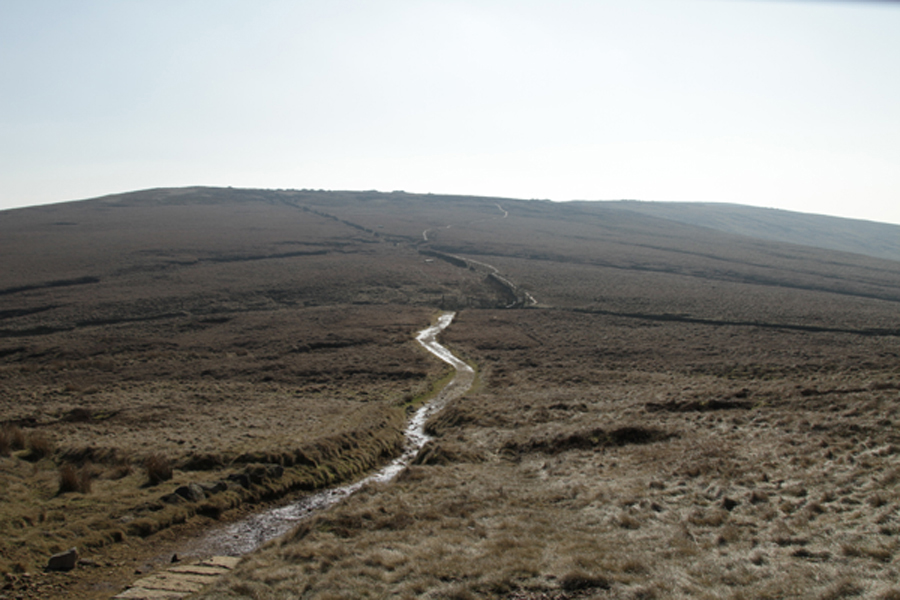 I may be a wage slave on Monday but I am a free man on Sunday is a lyric from a Ewan MacColl folk song, Manchester Rambler, in which he describes the mass trespass on the then private land of Kinder Scout in 1931. Inspired by this Œmass trespass¹ in the Peak District, which led to the opening up of the countryside & the creation of National Parks, Kathleen Herbert¹s film explores the idea of contemporary landscape as a politicised space in which it is treated as an object rather than a resource. The viewer is taken on a journey through different visions of the land, from the urban spaces used to contrive a form of natural landscape to the rural. The raw contrasting soundtrack embellishes the imagery of the land as a lost ancient antiquity. Co-commissioned by the National Trust and Southbank Centre. |
|
Stable 2007 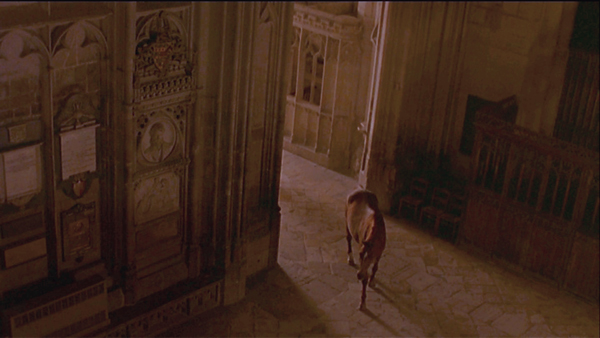 Stable is film documenting a performance instigated by Kathleen, where for one night she bought horses into Gloucester Cathedral to walk freely through and explore the architecture of the space. During the English Civil War, Puritan troops, in an act of political bravado, used the Cathedral to stable horses. Through use of the uncanny, the film blurs boundaries between fact and fiction, myth and reality, investigating ideas around superstition, rituals and histories. Hebert draws out the apparent uninteresting or unspoken, redefining social, political, historic spatial narratives. |